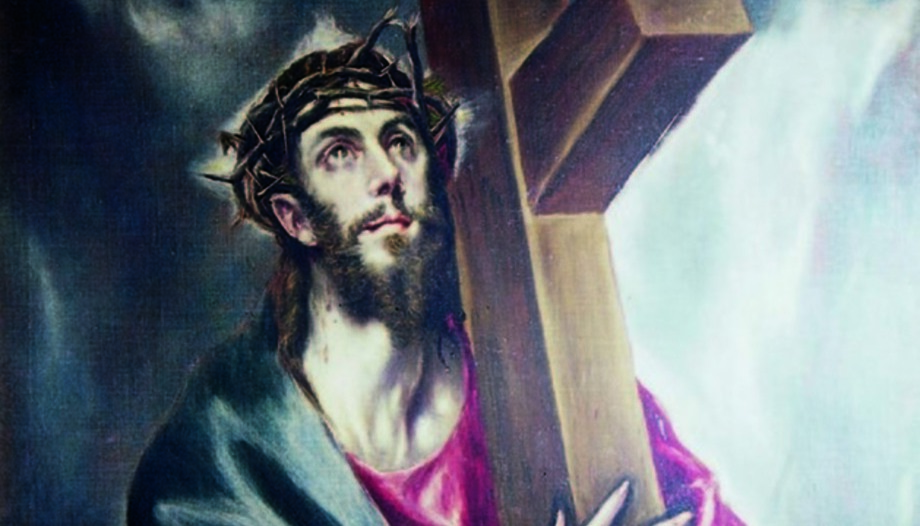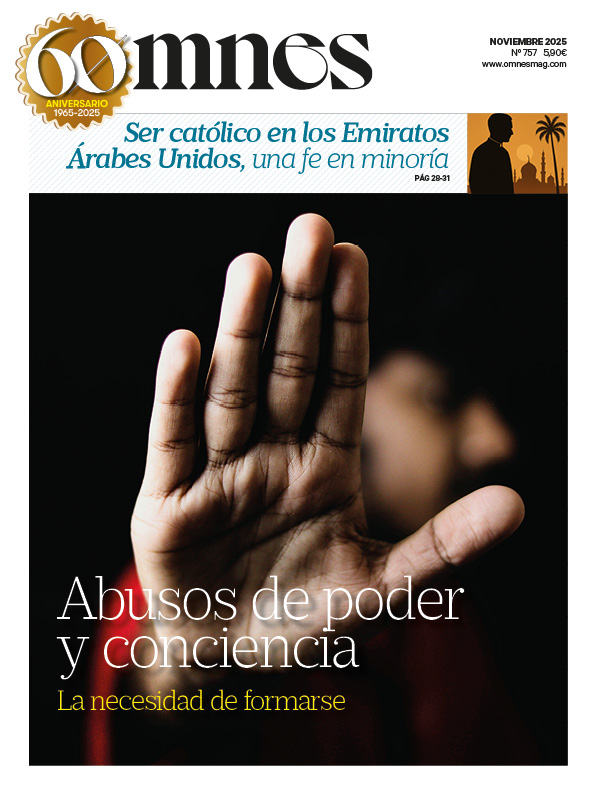The exhibition of El Greco (Candia, 1541 - Toledo, 1614) is located in the Church of Sant'Agnese in Agone (St. Agnes in Agony) in Rome and features three of the artist's masterpieces: "The Holy Family with St. Anne" (1590-1596), "The Baptism of Christ" (1596-1600) and "Christ Embracing the Cross" (1590-1596). These paintings, belonging to private collections, have left Spain for the first time for this occasion.
Monsignor Rino Fisichella, proprefect of the Dicastery for Evangelization, presided over the opening ceremony. The exhibition, which is part of the program "The Jubilee is Culture", a preparation for the Jubilee 2025 with numerous activities and cultural proposals, will be open until October 5, 2023 and can be visited daily from 9:00 am to 9:00 pm.
The catalog of the exhibition praises the figure of this artist of Greek origin pointing out that "El Greco's painting is extremely evocative: there are glimpses of landscape in his paintings that could be cut out and presented with the signature of Paul Cézanne; others evoke Claude Monet; some of the constructions of his paintings and certain anatomical deformations of his characters make one think of Matthias Grünewald, or point towards the considerations of the expressionists, for example Franz Marc, who saw a model in this artist. Furthermore, the traces left in El Greco by the paintings of Titian, Tintoretto, Veronese, Bassano and Correggio are evident".
"The Holy Family with St. Anne" (1590-1596).
The painting of "The Holy Family with Saint Anne" was donated to the Hospital San Juan Bautista in Toledo around 1631. This theme had already been treated by El Greco in other paintings, including a version with St. Anne and St. John the Baptist as a child. However, the Hospital version is considered the "most luminous and elegant".
"The diagnostic analysis of the painting has revealed that beneath the face of the Virgin Mary there is a precise drawing, with traces of a patient search for ideal beauty; (...) El Greco's search for perfect harmony is evident in that face, which was to make visible how the person of Mary of Nazareth is the effect of God's saving work, the first miracle of Christ, the concrete example of how the human being becomes a masterpiece of profound spiritual beauty if he fully unites his life to that of the incarnate Son of God", explains the exhibition catalog.
In this work, St. Joseph caresses the foot of the Child Jesus in a gesture that expresses "tenderness, but also underlines the experience of the Incarnation: the son begotten by his virgin wife, whom [St. Joseph] knew he had not helped to beget, is not an insubstantial apparition of a celestial being, but a true human being, endowed with sensitive flesh like ours."
"The Baptism of Christ" (1596-1600).
The painting of "The Baptism of Christ" comes from the main altar of the chapel of the Hospital de Tavera, in Toledo.
The garments of Christ are in the hands of angels. One of them is red, like one of the main robes of the Roman emperors. The other robe, blue, symbolizes the divine nature of Jesus.
The fact that Christ strips off his garments to enter the water also has a symbolic value: "In the first place, it expresses the humble abasement of Christ, who renounced all splendor to come to us as a friend and to descend into our weakness and death in order to raise us up". Moreover, it anticipates the moment when Jesus is stripped of his garments at the foot of the Cross. "The immersion in the waters where sinners sought the purity that flows from God's merciful intervention finds its fulfillment in Christ's immersion in his passion and death, the supreme work of divine mercy that offers everyone the possibility of true purification," the catalog indicates.
"Christ embracing the Cross" (1590-1596).
For its part, the painting "Christ embracing the Cross" was in the Church of Santa Catalina de El Bonillo (Albacete). It was identified as a work by El Greco in 1928, when the sculptor Ignacio Pinazo and the journalist Abraham Ruiz were selecting paintings for the Ibero-American Exposition of Seville in 1929. Shortly afterwards, experts from the Prado Museum, among them Ángel Vegue and Goldoni, confirmed El Greco's authorship. Alfonso Emilio Pérez Sánchez, who was director of the Prado Museum between 1983 and 1991, dated the work between 1590 and 1596, considered the painter's most brilliant period.
The artist's signature appears twice in the painting, in Latin and Greek. This leads critics to believe that it is the original prototype used by El Greco for later replicas.
It is unknown how this work could have reached El Bonillo, the only town in Albacete that has a work by El Greco. But it is known that, at that time, the parish of Santa Catalina was one of the richest in the archdiocese of Toledo and that its parish priest between 1595 and 1631, Don Pedro López de Segura, was a great art lover (in his will and inventory 218 paintings appear). In addition, it is known that he knew El Greco personally and even befriended him. Don Pedro, on the other hand, attended the literary evenings at the Buenavista Palace, which El Greco in turn frequented. There he also met Miguel de Cervantes. Among the paintings that appear in the inventory of the will of the parish priest of Santa Catalina, there was one described as "the one of Christ carrying the Cross".
Although it is not known with certainty, it is possible that it was El Greco's "Christ embracing the Cross" which is currently exhibited in Rome.








